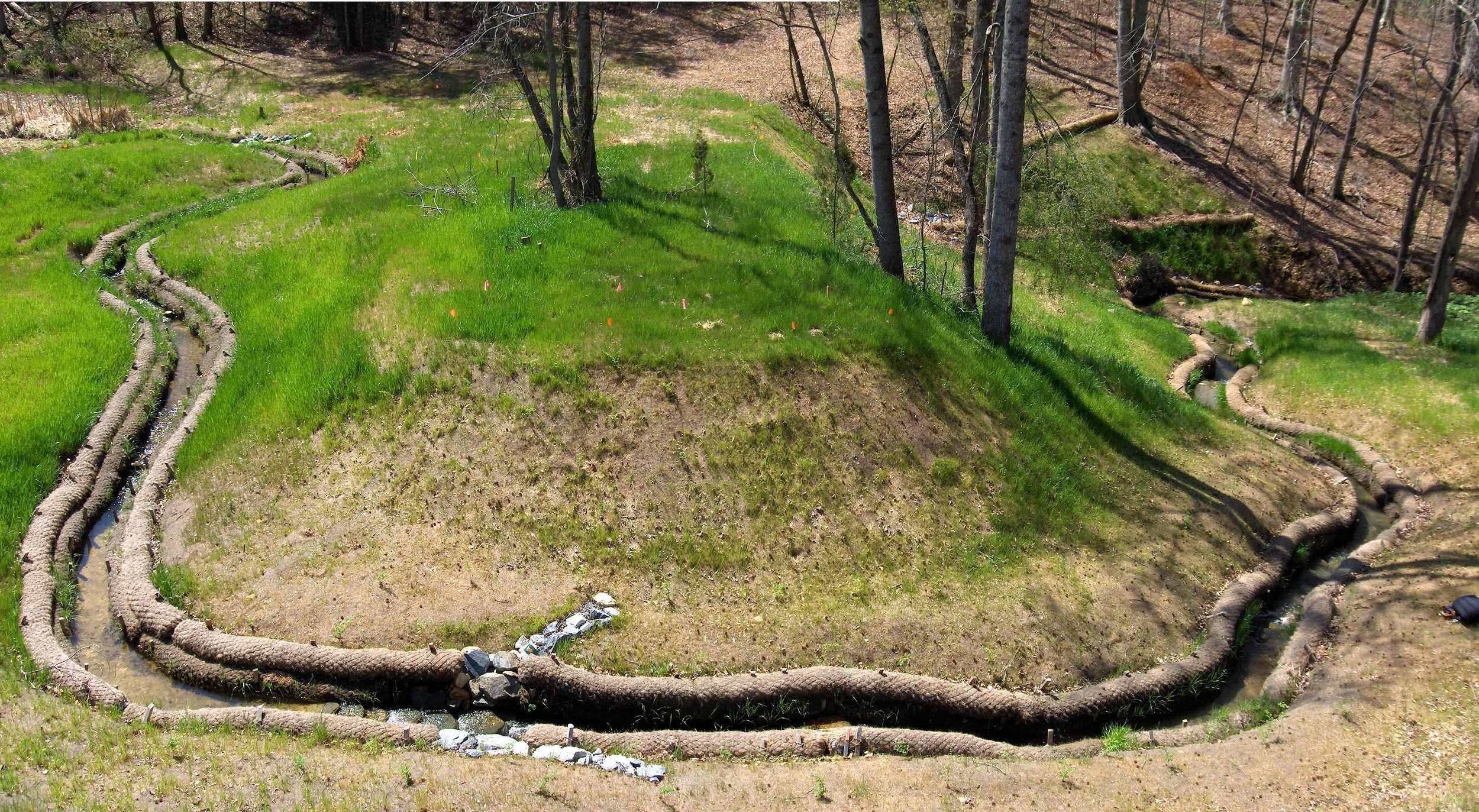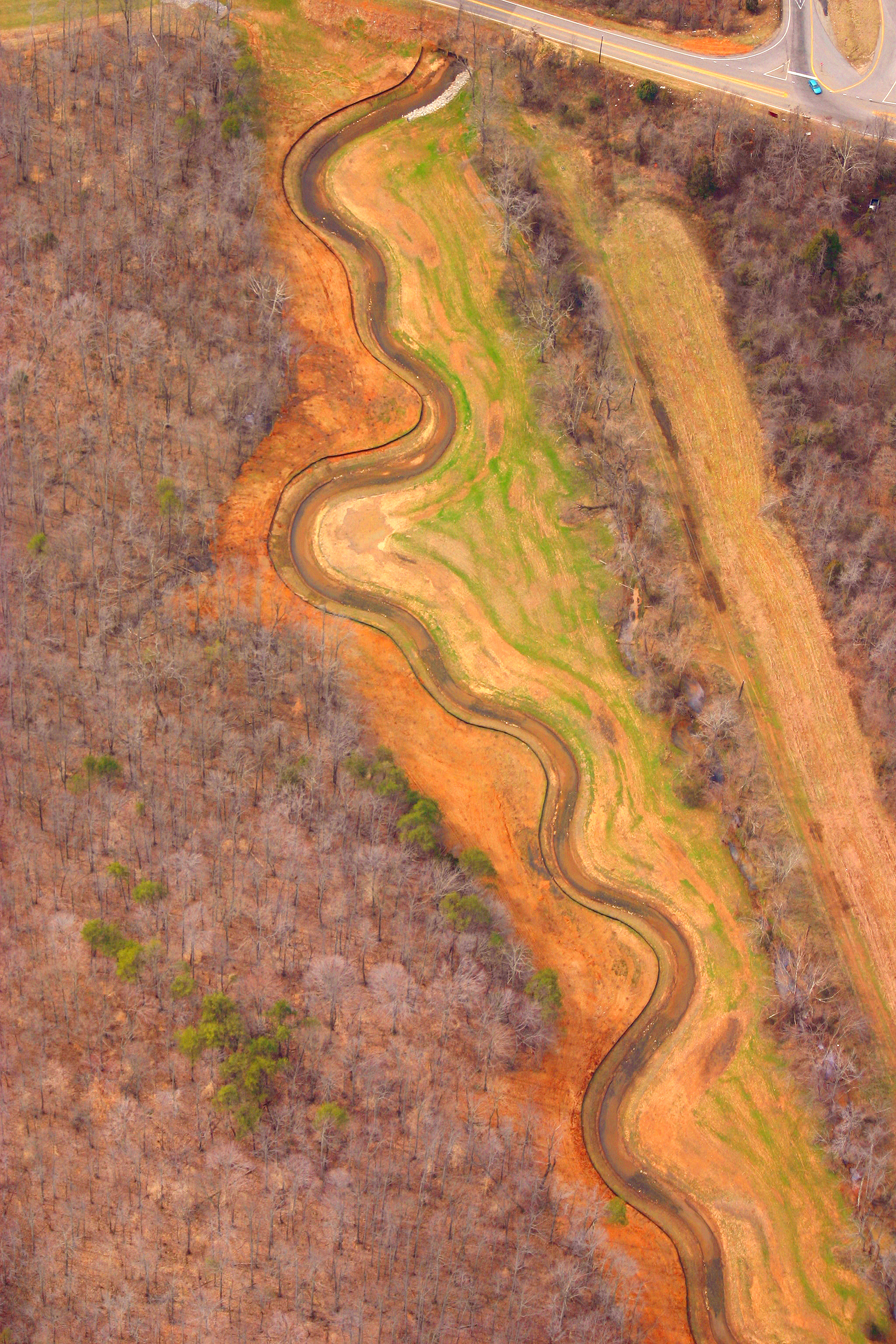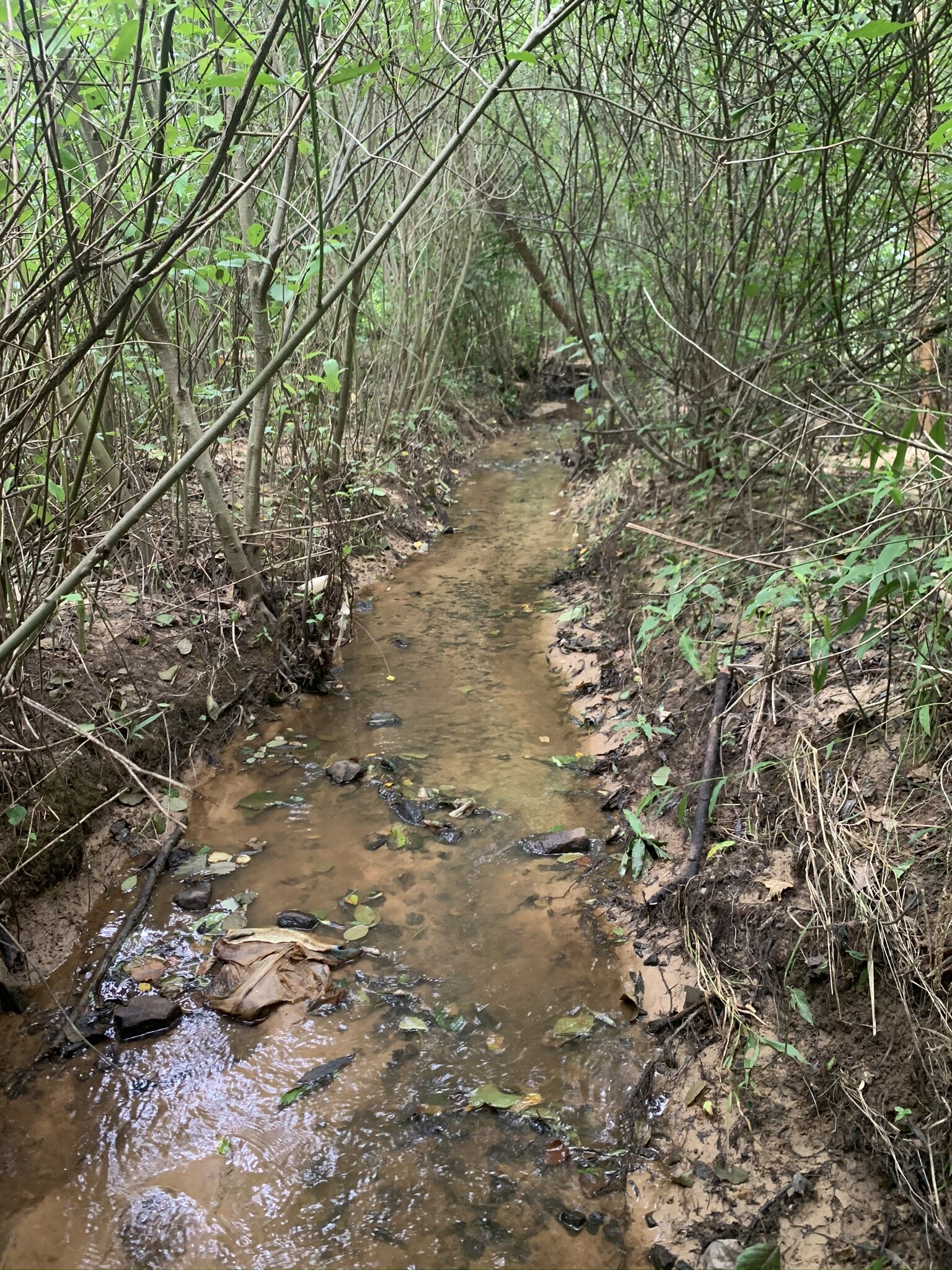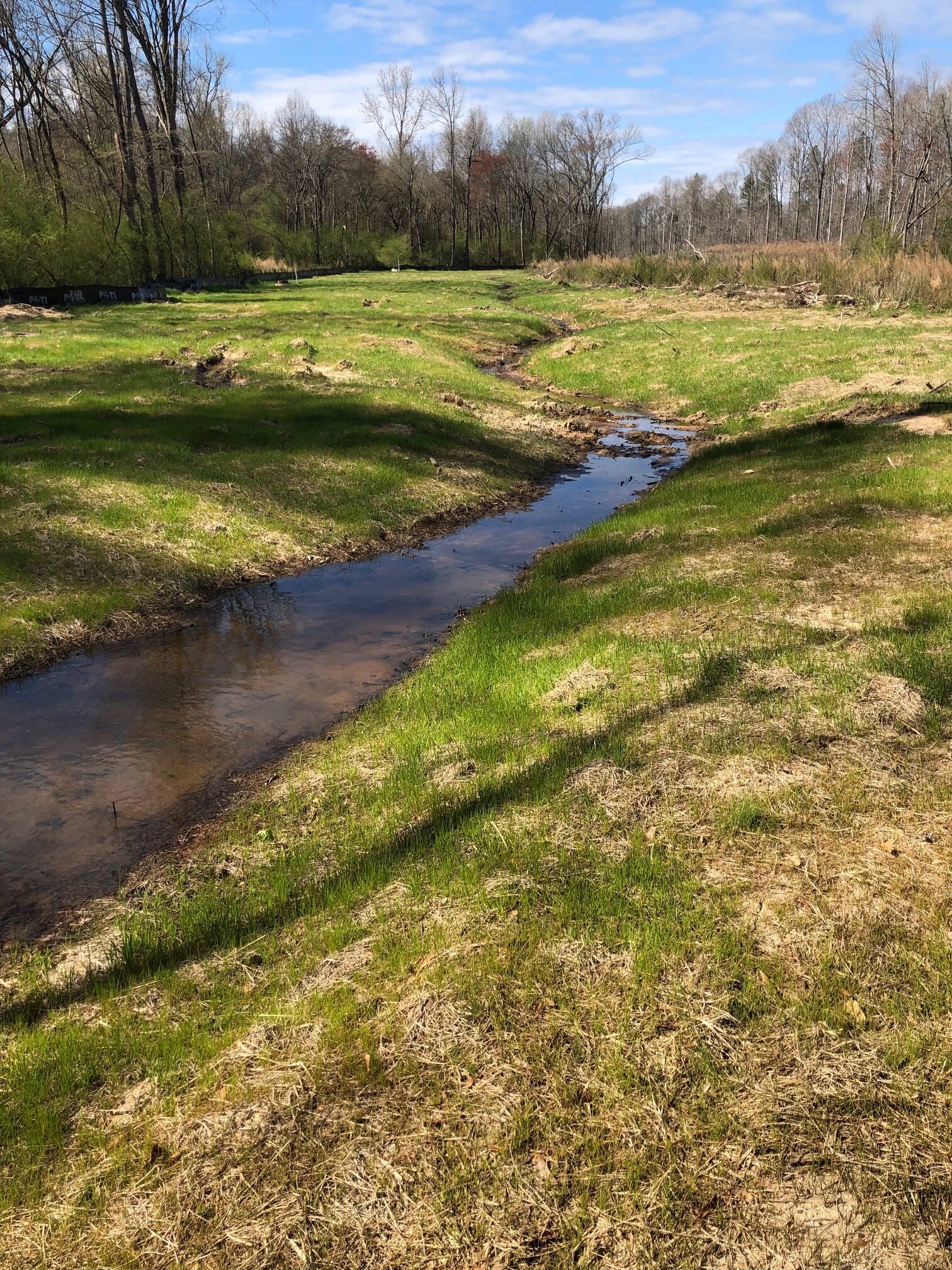STREAM RESTORATION
HARP has over 20 years of experience in stream restoration and enhancement using natural channel design techniques for mitigation of impacts set forth by Clean Water Act 404/401 permitting projects. In collaboration with trusted engineering and land survey partners, HARP has led stream restoration design efforts for approximately 46,500 linear feet of streams and rivers for the NCDOT, the NCDENR, the NC Division of Mitigation Services, for various County and Municipal agencies (e.g. CMUD, Charlotte Water, and Forsyth/Winston Salem Utilities), and for private clients. HARP's early restoration projects (mid 1990's) were some of the first stream restoration projects in North Carolina undertaken using a natural reference reach approach and provided a test-bed for the NCDWQ's interim stream restoration protocols that were the predecessor to the current inter-agency North Carolina Guidelines for Stream Restoration. Urban watersheds in particular presented some unique restoration challenges over rural streams. From 2000 to 2003 HARP evaluated a number of urban watersheds in Mecklenburg County to better define rating curves, return intervals, as well as channel bankfull and regime relationships so that designs would reliably meet the strict stability thresholds needed for restoration projects undertaken within built out urban watershed conditions. None of HARP's constructed restoration projects have failed monitoring criteria and a number of them have been closed out and 4 were closed out successfully after their 5th year of monitoring. Below are a few examples of some of HARP's projects wherein we provided initial stream assessments, channel morphology measurements for use in natural channel design, construction oversight and monitoring.
HARP has conducted more than 130 individual stream channel assessment, restoration, and bio-engineering projects in Mecklenburg County, Guilford, Forsyth, and Alamance counties of NC. HARP has prepared natural channel based restorations in Greenville and York Counties in SC. HARP's scientists can assess streams and evaluate their potential for mitigation, collect geomorphic and biological data, analyze the data and prepare restoration plans and natural channel designs based on reference reach data and using the North Carolina Stream Assessment Methodology (NCSAM). In collaboration with engineering and survey partners HARP can provide design build services for stream restoration, wetland restoration and stormwater control measures (SCMs). HARP has been studying the watersheds of Mecklenburg County and adjacent areas for more than 20 years. We possess a reference reach database for natural channel design stream restoration of the region that is unrivaled. Our hydrologists, geologists and botanists understand stream geomorphology, watersheds and botanical communities and their interdependence. HARP's natural channel design team is of the most innovative in the field. Our understanding of the science behind natural channel design restoration coupled with decades of experience and a dedication to solving stream and wetland challenges is unparalleled. HARP's stream assessment and natural channel design team utilizes Dr. Dave Rosgen's methodologies as well as methodologies specific to stream geomorphology in highly developed urban settings. HARP's team continually provides innovative solutions to our client's challenging problems.





